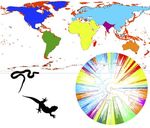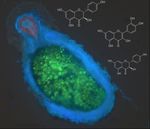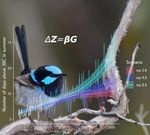T Have you considered acquiring research training during your degree? - Research School of ...
←
→
Page content transcription
If your browser does not render page correctly, please read the page content below
T
Have you considered acquiring research training during your degree?
During the 2021-2022 summer break, the Research School of Biology is offering Summer Research Scholarships (SRS)
and Summer Research Internships (SRI) for ANU students. The program is designed for talented students interested
in trialling research or/and considering honours.
Successful applicants are awarded a weekly allowance of $350 for the 9-week program (Mon 22nd Nov to Fri 21st Jan
2022; breaking COB Friday 24th Dec to Monday 3rd Jan 2022 inclusive, with pay, for the Christmas/New Year period).
For information, see https://biology.anu.edu.au/education/summer-research-scholarships
Apply here. Application Deadline: 31st August (late applications not accepted)
Please email rsb.studentadmin@anu.edu.au if you have any queries or troubles with the online application process.
Available research themes and projects
Daniel Noble Cascading effects of population density and resource quality on
maternal reproductive investment in a lizard.
Climate change is expected to change population density and affect resource availability and
quality. The combined effects may have negative consequences that ultimately affect
population growth by 1) reducing female reproductive investment and 2) impacting offspring
recruitment through poor early environmental conditions. This project will use large outdoor
experimental enclosures to conduct ecological manipulations of population density and food
quality to understand how maternal reproduction, and offspring provisioning, are impacted in
a model lizard species, the Garden Skink (Lampropholis delicata). Get experience running
large-scale experiments
Nicotra Lab: Thermal tolerance and in situ microenvironment
measurements in plants from extreme environments.
This project will explore the microenvironmental conditions that alpine species are
exposed to and how these species cope with extreme conditions in situ in the
Snowy Mountains and in the lab. Students will be involved in the deployment of
sensors in the field and they will learn different methods to measure thermal
tolerance in plants and other soil, air and plant parameters. This project involves
many field trips to Kosciuszko National Park for deployment of instruments and
measurements as part of a team of enthusiastic researchers.
Xiaoxiao Zhang– John Rathjen lab
Synthetic biology to engineer novel disease resistance in cereal crops
Plants possess a sophisticated innate immune system based on natural resistance (R)
genes that detects pathogen attacks and activates defences. R genes are an
invaluable natural resource that plant breeders rely on to protect crops against
devastating diseases. This project uses a synthetic biology strategy to generate new
R genes that can be deployed in agriculture and will help reveal the structural and
molecular mechanisms underlying R protein function.
You will learn cutting edge synthetic biology techniques, including directed evolution,
high-throughput yeast library screening, structure-based protein engineering
(including Google Alphafold2!) and gene transformation in plants.Megan Head: Plant-insect interactions in changing environments
We have several projects available in our lab that are related to plant-
animal interactions and how these interactions might be impacted by
changes in the environment. The first is looking at how tree susceptibility
to psyllid attack influences dieback in Eucalyptus blakelyi. This project will
involve leaf and insect sampling in the field as well as quantifying leaf
traits, herbivory and psyllid communities. The second project is looking at
effects of urbanisation on plant-pollinator interactions. This project will involve characterising urban
habitats, identifying pollinators and observing their behaviour.
Benjamin Schwessinger: A synthetic biology approach to detect pathogen molecules in crops
This assay will enable us to harness the full impact of the genomic revolution on plant pathology. It
will bridge the gap between bioinformatic prediction of candidate immunogenic pathogen genes and
functional validation of recognition in wheat cells.
Darren Wong – Peakall Lab: Molecular systems biology of novel
flower colour evolution in orchids
One of the key mechanisms that has shaped the diversity of flowering plants is
pollination and animal pollinator-driven speciation often involves dramatic
flower colour changes. Remarkably, the colour transitions into and out of
green/dull flowers is one common, but overlooked evolutionary shift. This study
will take advantage of unique Australian orchids to investigate the molecular
mechanisms underpinning this phenomenon. Key outcomes of this study include
the elucidation of the floral pigment, gene, and regulatory networks involved and
the establishment of functional genetic changes for the first time.
Ulrike Mathesius: Identification of chemical signals necessary for
symbiotic nitrogen fixation by metabolome screening
Legumes form a symbiosis with nitrogen fixing bacteria, but so far it is not known
why other plants cannot successfully form this symbiosis. Our group aims to identify
signalling molecules that are necessary for the symbiosis to form. We will combine
confocal microscopy with mass spectrometry to isolate and identify signalling
molecules in the flavonoid pathway that are uniquely induced during nodulation in
the model legume, Medicago truncatula. We will then test their effect on
nodulation by trying to rescue nodulation in plants with a modified flavonoid
pathway.Octavio Jimenez Robles -Moritz Lab: Compositional and phylogenetic
diversity of island vertebrates
The Theory of Island Biogeography (TIB) is one of the most solid theories in ecology with
important consequences for the study of evolution, invasion ecology, conservation and
management. The TIB predicts that island communities originate from subsets of
mainland communities that depend on the area of the islands and their distance to the
mainland, with the possibility to evolve into new species after isolation. The recent
availability of almost complete phylogenies and distribution data of all vertebrates,
allows exploring questions related to the TIB including new metrics of diversity (alpha,
beta, and its components of turnover, nestedness, both at compositional and phylogenetic level).
Karen Ford: How does landscape disturbance affect
habitat quality for eucalypt folivores?
Eucalypt leaves are a critical food resource for marsupial folivores,
including the listed koala and greater glider. Landscape disturbance
events (e.g. fire and logging) have the capacity to substantially alter
the quantity and quality of available food for these animals, as well as
other habitat properties such as shelter and the availability of nesting
hollows. Depending on their interests, students will have the
opportunity to learn laboratory techniques for analysing the
nutritional composition of eucalypt leaves, and/or to collect data in the field for nutritional ecology studies investigating
the impacts of landscape disturbance on marsupial folivores.
Lindell Bromham: Origins of agriculture and the domestication potential of Indigenous food plants
95% of the world’s food energy rests on just 30 crop plants. Jared Diamond argued in his book Guns Germs and Steel
that people from Western Europe had the good fortune to be from a part of the globe that naturally contained plants
and animals amenable to domestication. In contrast, Bruce Pascoe has argued in his book Dark Emu that Indigenous
Australians domesticated a range of crops, including native grasses and yam daisies. Are Indigenous food plants
comparable in relevant traits to the wild ancestors of domesticated plants from other parts of the world? Are Australia’s
indigenous food plants phylogenetically distinct from other global domesticates, or do they share the same phylogenetic
distribution as other domesticated varieties? This project will involve literature searches, data collection from published
sources on Indigenous food plants, and potentially some evolutionary analysis.
Timothee Bonnet: Is current adaptation to climate change good for
population persistence, and how to tell?
Climate change threatens animal populations in particular because of the increased
frequency in extreme weather events. For this project you will use computer
simulations in R or C++ to clarify whether rapid adaptive evolution in response to
extreme events is likely to be helpful or harmful for population persistence, or clarify
how to infer the importance of adaptive evolution in response to extreme events from
empirical data using quantitative genetics and statistical models in R. This project
involves only computer work but if you wish you can contribute to the superb fairy-wren field work that underlies the
research.You can also read

























































